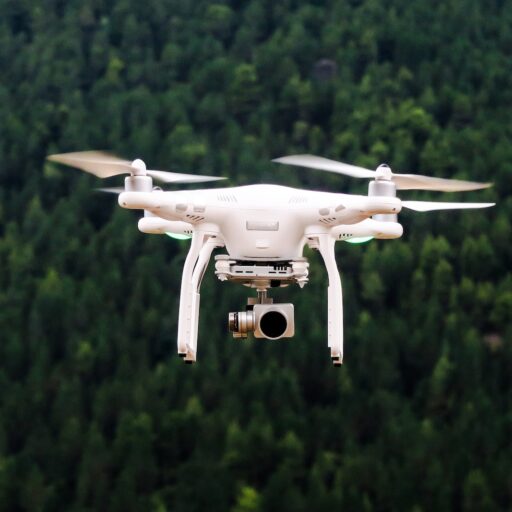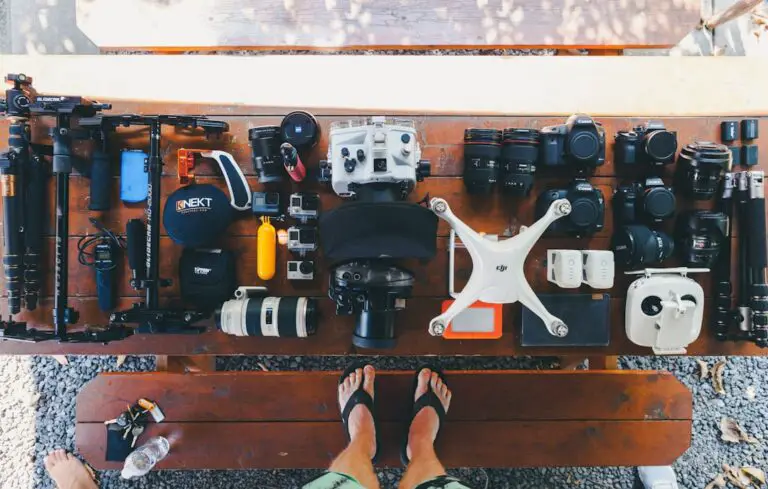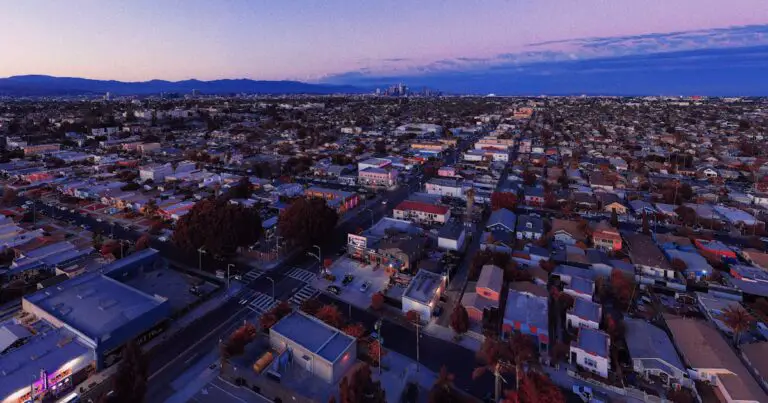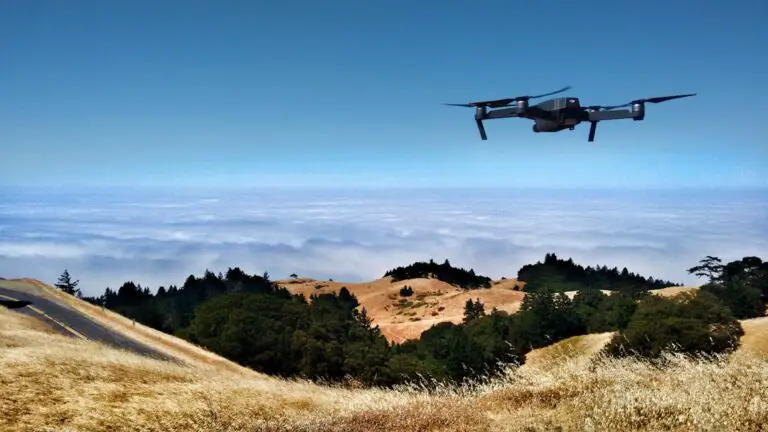Support our educational content for free when you purchase through links on our site. Learn more
15 Eye-Opening Drone Statistics from 2020 You Didn’t Expect 🚁
2020 was a year like no other — and the drone industry soared to new heights amid global challenges and rapid innovation. From a doubling in consumer drone sales to groundbreaking regulatory changes, the data from that pivotal year reveals surprising trends that still shape the skies today. Curious how drones went from hobby gadgets to essential tools for agriculture, delivery, and public safety? Stick around, because later we’ll dive into the top commercial uses, the technology breakthroughs that wowed pilots worldwide, and even some unexpected stats that might just blow your mind.
At Drone Brands™, we’ve been tracking every twist and turn of the drone market, and 2020’s numbers tell a story of resilience, growth, and transformation. Whether you’re a seasoned pilot, a business owner exploring drone opportunities, or just drone-curious, this comprehensive breakdown will give you the insider insights you need to understand where drones have been — and where they’re headed next.
Key Takeaways
- Global drone market hit $22.5 billion in 2020, fueled by a surge in both consumer and commercial sales.
- DJI dominated with 70-80% market share, but competitors like Skydio and Parrot gained ground.
- Pandemic accelerated drone adoption for contactless delivery, agriculture, and remote inspections.
- FAA’s Remote ID and new operational rules paved the way for safer, more widespread drone use.
- Top industries using drones included construction, agriculture, energy, and public safety.
- Innovations like longer flight times, smarter obstacle avoidance, and 4K video became standard.
Ready to explore the drones that defined 2020? Check out the latest gear from DJI and Skydio to get started:
- 👉 Shop DJI Drones: Amazon | Walmart | DJI Official
- Explore Skydio Models: Skydio Official
Table of Contents
- ⚡️ Quick Tips and Facts About Drone Statistics 2020
- 🚀 The Rise of Drones: A 2020 Industry Overview and Market Growth
- 📊 Top 10 Drone Market Statistics of 2020: Sales, Revenue & User Demographics
- 🌍 Geographic Breakdown: Which Countries Led the Drone Boom in 2020?
- 👨💼 Who’s Flying? Drone User Profiles and Consumer Insights in 2020
- 🏢 Commercial vs. Recreational Drones: Usage Trends and Industry Applications
- 🛠️ Drone Technology Trends in 2020: Innovations and Popular Features
- 📉 Challenges and Regulatory Impact on Drone Growth in 2020
- 💡 Environmental and Agricultural Drone Statistics: Changing the Game
- 🎥 Aerial Photography and Videography: Drone Usage Stats and Trends
- 📦 Drone Delivery and Logistics: How 2020 Set the Stage for the Future
- 🔢 7 Surprising Drone Usage Stats You Didn’t Know from 2020
- 📅 Schedule at a Glance: Key Drone Events and Milestones in 2020
- 🤝 Collaborators and Industry Leaders Driving Drone Data in 2020
- 📚 Conclusion: What 2020 Drone Statistics Tell Us About the Future
- 🔗 Recommended Links for Drone Enthusiasts and Professionals
- ❓ FAQ: Your Burning Questions About Drone Statistics 2020 Answered
- 📖 Reference Links and Data Sources for Drone Statistics 2020
Hey there, fellow pilots and sky enthusiasts! Welcome to the Drone Brands™ hangar. We’re your expert team, the folks who live and breathe all things that fly, buzz, and capture breathtaking aerial adventures. Today, we’re firing up the time machine and setting the dials for 2020. Why? Because 2020 was a wild, weird, and absolutely pivotal year for the drone industry. It was a year of explosive growth, surprising new uses, and regulatory shake-ups that are still making waves today. So, strap in as we unpack the most crucial and entertaining drone statistics of 2020!
⚡️ Quick Tips and Facts About Drone Statistics 2020
Before we take a deep dive, let’s get a bird’s-eye view with some rapid-fire stats that defined the drone landscape in 2020. This was a year that truly separated the hype from the reality.
| Statistic | The Nitty-Gritty Details |
|---|---|
| Global Market Size | The global drone market soared to $22.5 billion in 2020. |
| DJI’s Dominance | DJI held a staggering 70-80% of the commercial drone market share. |
| COVID-19 Impact | The pandemic spurred a massive increase in demand for contactless solutions, with consumer drone sales more than doubling from March to November 2020 compared to 2019. |
| Commercial Growth | The commercial drone market was valued at $13.44 billion in 2020. |
| Top Industries | Construction and Agriculture were the top industries utilizing commercial drones in 2020. |
| FAA Registrations | By August 2020, there were 382,377 non-recreational drones registered with the FAA in the US. |
🚀 The Rise of Drones: A 2020 Industry Overview and Market Growth
Let’s be honest, 2020 was a year most of us would rather forget. But for the drone world, it was a spectacular catalyst. While many industries stalled, the drone industry hit the accelerator. The global pandemic, in a strange twist of fate, highlighted the immense value of unmanned aerial vehicles. Suddenly, the “remotization” of work became a real thing, and drones were perfectly positioned to be part of that shift.
Companies that had been experimenting with drones for things like remote inspections and delivery were forced to get serious. We saw a surge in interest not just from hobbyists looking for a socially-distanced activity, but from major enterprises seeking to maintain operations safely. This wasn’t just about fun anymore; it was about resilience. Check out the latest in Drone Industry News to see how these trends have evolved.
📊 Top 10 Drone Market Statistics of 2020: Sales, Revenue & User Demographics
Alright, let’s get down to the numbers that tell the story of 2020.
- A $22.5 Billion Industry: The total global drone market hit a whopping $22.5 billion in 2020, with forecasts predicting it would climb to over $42.8 billion by 2025. That’s not just growth; that’s a rocket launch!
- DJI’s Unshakable Lead: Chinese manufacturer DJI was the undisputed king, commanding an incredible 70-80% of the commercial market. In the consumer space, their dominance was even more pronounced, holding 94% of the market.
- Commercial Market Hits $13.44 Billion: The business side of drones was booming, with the commercial market valued at $13.44 billion. This was driven by industries realizing the massive ROI drones could provide.
- Consumer Sales Double: The pandemic created a new wave of hobbyist pilots. With people stuck at home, sales of consumer drones more than doubled between March and November compared to the previous year.
- Energy Sector Leads the Pack: When it came to commercial use, the Energy industry was the top dog, using drones for everything from power line inspections to monitoring oil and gas infrastructure.
- Agriculture Sprays Soar 135%: One of the most dramatic growth areas was in agricultural spraying, where hardware sales shot up by 135%, primarily in Asia.
- Software on the Rise: It wasn’t just about the hardware. Drone software companies saw incredible growth. For instance, DroneDeploy reported its most flights ever in May 2020.
- US Consumer Sales Exceed $1.25 Billion: In the United States alone, consumer drone sales flew past the $1.25 billion mark.
- Military Market Still Massive: While the commercial sector was growing fast, the military drone market in 2020 was valued at $5.6 billion.
- A Shift to Commercial Focus: In the US, the drone industry became more commercially focused than ever. While the commercial sector was just 5% of the market in 2016, it grew to nearly 25% by 2020.
🌍 Geographic Breakdown: Which Countries Led the Drone Boom in 2020?
While drones were taking off globally, a few key regions were leading the charge.
North America: A Hub of Commercial Innovation
The United States remained a key market, with significant government and business spending. North America held the largest market share at 38%, driven by favorable government stances and massive demand from various industries. However, 2020 also saw a different kind of drone activity. The Bureau of Investigative Journalism meticulously tracked US covert drone actions, providing extensive data on strikes in countries like Afghanistan, Somalia, and Yemen throughout 2020. Their data, compiled from a range of sources, “represents our best estimates” and offers a sobering counterpoint to the commercial boom.
Asia: The Manufacturing Powerhouse
You can’t talk about drones without talking about China. As the home of industry giant DJI, China dominated the manufacturing landscape, with seven of the top 20 commercial drone makers being Chinese companies. The broader Asian market, including Japan and a rapidly growing Indian market, actually overtook North America as the largest regional drone market in 2020.
Europe: A Steady Climb
Europe also saw steady growth, with French manufacturer Parrot being a notable player, ranking third in the commercial drone space behind DJI and Yuneec.
👨💼 Who’s Flying? Drone User Profiles and Consumer Insights in 2020
So, who was behind the controls in 2020? The answer is… pretty much everyone! The pilot community became more diverse than ever.
- The Hobbyist Resurgence: As we’ve mentioned, the pandemic brought a flood of new recreational pilots. These were people looking for a new passion, a way to explore their local surroundings from a new perspective, or simply a fun, solitary activity. Many of them started with fantastic Beginner Drones like the DJI Mini 2, which launched in 2020 and was a massive hit.
- The Freelance Professional: We saw a lot of folks who, due to job changes, decided to turn their passion into a profession. Armed with a Part 107 certificate and a capable drone like the DJI Mavic Air 2, they started businesses in real estate photography, event videography, and local inspections.
- The Enterprise Operator: Large companies in construction, energy, and agriculture scaled up their drone programs significantly. These weren’t just individual pilots but entire teams dedicated to leveraging drone data to improve efficiency and safety.
Here at Drone Brands™, we heard countless stories from new pilots. One of our favorites was from a wedding photographer who was grounded by lockdowns. She bought a Mavic Air 2, learned to fly, and started offering “socially-distanced” aerial property photos for real estate agents. It completely saved her business!
🏢 Commercial vs. Recreational Drones: Usage Trends and Industry Applications
The line between “fun” and “work” in the drone world blurred a lot in 2020. While recreational flying saw a huge spike, the real story was the explosion in commercial applications.
Commercial Use Cases That Dominated 2020
| Industry | Primary Applications | Key Benefits in 2020 |
|---|---|---|
| Construction & Archaeology | Site mapping, progress monitoring, asset inspection, creating 3D models. | ✅ Reduced need for on-site personnel, improved safety, faster data collection. |
| Agriculture & Environment | Crop health analysis, precision spraying, livestock monitoring, environmental mapping. | ✅ Increased crop yields, reduced pesticide use, efficient land management. |
| Energy | Inspection of power lines, wind turbines, solar farms, and pipelines. | ✅ Safer inspections of dangerous assets, reduced downtime, predictive maintenance. |
| Media & Entertainment | Aerial cinematography for films, TV, and news gathering. | ✅ Unique camera angles, lower production costs compared to helicopters. |
| Public Safety | Search and rescue, accident scene reconstruction, crowd monitoring. | ✅ Enhanced situational awareness, rapid deployment, keeping first responders safe. |
A huge part of this commercial growth was in drone mapping and data collection. Events like DroneCamp 2020, a collaborative course from California universities, went virtual and trained a new cohort of professionals. As they noted, their goal was to “collectively build and support the drone mapping community.” The first YouTube video embedded above, titled “Drone Camp 2020: Introduction to Drone Photogrammetry and Data Processing,” is a fantastic resource from that event that covers how raw drone images are turned into powerful 3D models and maps. This is the kind of work that opens up incredible Drone Business Opportunities.
🛠️ Drone Technology Trends in 2020: Innovations and Popular Features
2020 wasn’t just about more drones; it was about better drones. The technology packed into these flying robots took a major leap forward.
The Stars of the 2020 Sky
- DJI Mavic Air 2: This was arguably the drone of the year. It hit the sweet spot of portability, power, and affordability. With 4K video at 60 fps, a 34-minute flight time, and improved obstacle avoidance, it was a game-changer for pros and hobbyists alike.
- DJI Mini 2: The successor to the wildly popular Mavic Mini, this sub-250g drone packed a 4K camera and improved range, making it the ultimate travel-friendly and regulation-dodging drone.
- Skydio X2: While DJI dominated sales, American manufacturer Skydio made waves with its incredible autonomous flight capabilities. The X2 was aimed at enterprise and public sector clients, showcasing the future of AI-powered flight.
- Parrot Anafi USA: Parrot focused on the enterprise and first responder market with this secure, rugged, and versatile drone featuring a powerful 32x zoom.
Key Tech Advancements:
- Longer Flight Times: 30+ minutes of flight time became the new standard for flagship consumer drones.
- Smarter Obstacle Avoidance: Systems like DJI’s APAS became more sophisticated, not just stopping for obstacles but actively plotting a course around them.
- Improved Camera Tech: 4K/60fps video and larger sensors became more common, delivering truly cinematic quality from the air.
- Enhanced Transmission: Technologies like DJI’s OcuSync 2.0 provided clearer, more reliable video feeds over longer distances.
👉 Shop the 2020 All-Stars:
- DJI Mavic Air 2: Amazon | Walmart | DJI Official Website
- DJI Mini 2: Amazon | Walmart | DJI Official Website
📉 Challenges and Regulatory Impact on Drone Growth in 2020
It wasn’t all smooth flying in 2020. The industry faced some serious headwinds, particularly on the regulatory front.
The FAA Makes Its Move
The end of 2020 was a landmark moment for US drone law. The Federal Aviation Administration (FAA) finalized two major rules that would reshape the future of drone operations:
- Remote ID: Often described as a “digital license plate for drones,” this rule requires most drones to broadcast identification and location information. This was a crucial step for security and for integrating drones safely into the national airspace.
- Operations Over People and at Night: The FAA also laid out new rules allowing routine flights over people and at night without needing a special waiver, provided certain safety conditions are met. This was a massive win for commercial operators, especially those in news gathering and delivery.
These changes to the Part 107 regulations were complex, and keeping up with them is essential for any pilot. For a deeper dive, always check our Drone Laws and Regulations section.
US-China Tensions
Geopolitics also played a role. The US government added DJI to a restricted trade list in December 2020 and banned the use of Chinese-made drones by federal agencies. While this didn’t significantly dent DJI’s overall market share in 2020, it did create uncertainty and spurred growth for American manufacturers like Skydio.
💡 Environmental and Agricultural Drone Statistics: Changing the Game
Nowhere was the practical benefit of drones more obvious in 2020 than in the fields and forests. The ability to gather vast amounts of data from the air transformed these sectors.
- Precision Agriculture: As we saw, this sector boomed. Drones equipped with multispectral sensors could analyze crop health, identify irrigation issues, and apply treatments with surgical precision. This wasn’t just about saving money; it was about increasing yields and promoting sustainable farming.
- Environmental Monitoring: Researchers used drones for a huge range of applications. The DroneCamp 2020 program highlighted projects like using drones for “low-altitude mapping of emergent kelp canopy,” a cost-effective way to monitor vital coastal ecosystems. Another session focused on sensing crop water stress with thermal imagery, showcasing the advanced sensor technology being deployed.
🎥 Aerial Photography and Videography: Drone Usage Stats and Trends
For many, drones are synonymous with breathtaking images and videos. In 2020, the rising popularity of aerial photography was a major driver of the consumer market.
- The Prosumer Rise: Drones like the DJI Mavic 2 Pro, with its 1-inch Hasselblad sensor, blurred the lines between consumer and professional gear. It allowed serious hobbyists and independent creators to produce content with stunning quality.
- Social Media Fuel: Platforms like Instagram and YouTube were flooded with epic drone shots. This visual-first culture inspired a new generation to pick up a controller and take to the skies.
- New Creative Tools: Features like Hyperlapse, which became more accessible on drones like the Mavic series, gave creators powerful new ways to tell stories from the air.
📦 Drone Delivery and Logistics: How 2020 Set the Stage for the Future
If ever there was a year for drone delivery to prove its worth, it was 2020. The need for contactless delivery of essential goods was urgent.
- Zipline’s US Approval: Medical delivery giant Zipline received FAA approval to begin operations in North Carolina, a huge milestone. They planned to deliver medical supplies, showcasing a life-saving application of drone logistics.
- Wing’s Growth Spurt: Google’s sister company, Wing, saw its delivery operations grow by a staggering 500% in 2020. They were delivering everyday items like coffee and groceries in select communities in the US and Australia.
- The Pandemic Push: The COVID-19 crisis acted as a massive accelerator, forcing companies and regulators to take drone delivery more seriously than ever before. While widespread package delivery to your doorstep is still a ways off, 2020 was the year it went from a futuristic concept to a proven reality.
🔢 7 Surprising Drone Usage Stats You Didn’t Know from 2020
Think you know the whole story of 2020? Here are a few stats that might surprise you.
- DJI Misspellings: In the FAA’s non-recreational drone database, DJI was misspelled over 130 different ways (e.g., “DGI,” “jDI”). Proof that even regulators can make typos!
- Consumer Drones for Pro Use: A growing trend saw more consumer-grade drones being used for professional work, as the capabilities of models like the Mavic series became powerful enough for many commercial jobs.
- Drone Shows as a Business: With public gatherings limited, spectacular drone light shows (like those from Intel) became a profitable and safe way to create public art and entertainment.
- The “Other” Category Grew: While DJI was dominant, the “Other/Custom/DIY” category of commercial drones grew from 10% to 19% in 2020, showing increased competition and specialization in the market.
- Indoor Surveillance Drones: Companies began marketing drones specifically for indoor security, an emerging and sometimes controversial market segment.
- Drone Bubble Burst?: Despite the massive growth, some analysts in late 2019 had declared the “drone bubble” had burst, as many hardware startups failed. 2020 proved that the industry was shifting, not shrinking, with a new focus on software and services.
- Registration Renewal Wave: December 12, 2020, marked the first major renewal date for recreational drone registrations in the US, with approximately 800,000 registrations due.
📅 Schedule at a Glance: Key Drone Events and Milestones in 2020
2020 was a year of constant motion. Here are some of the key moments that defined the year for the drone industry.
| Date / Period | Event / Milestone | Significance |
|---|---|---|
| April 2020 | Launch of the DJI Mavic Air 2 | Set a new benchmark for consumer drones, combining high-end features with a portable design. |
| May 2020 | Zipline Receives FAA Approval | Paved the way for large-scale medical drone delivery operations in the United States. |
| Summer 2020 | DroneCamp 2020 Goes Virtual | A key educational event adapted to the pandemic, training professionals in drone mapping and data analysis. |
| November 2020 | Launch of the DJI Mini 2 | Redefined the ultra-light drone category with 4K video, making high-quality aerial imaging more accessible than ever. |
| December 2020 | FAA Finalizes Remote ID & Ops Over People Rules | A landmark regulatory moment that provided a clearer path for the integration of drones into the national airspace. |
| December 2020 | DJI Added to US Entity List | A significant geopolitical development that created challenges for the industry leader and opportunities for competitors. |
🤝 Collaborators and Industry Leaders Driving Drone Data in 2020
The story of 2020 was written by a diverse cast of characters, from global giants to innovative startups and academic institutions.
The Big Three Manufacturers
- DJI: The undisputed market leader, their product releases in 2020 like the Mavic Air 2 and Mini 2 set the agenda for the entire consumer and prosumer market.
- Parrot: The French company solidified its position in the enterprise and security space with its Anafi line, offering a secure alternative for government and commercial clients.
- Skydio: The leading US drone manufacturer, Skydio continued to push the boundaries of autonomous flight, gaining traction with enterprise customers looking for advanced AI capabilities.
The Data Drivers and Educators
- Drone Industry Insights (DroneII): This German-based research firm was a key source of data and analysis, with their reports providing many of the statistics cited here. Their work helps everyone from investors to pilots understand the market’s trajectory.
- DroneAnalyst: Another critical research group, DroneAnalyst provided deep dives into market share and industry trends, highlighting the nuances of DJI’s market position and the rise of competitors.
- University of California & California State University Systems: Through collaborations like DroneCamp, these institutions played a vital role in workforce development, ensuring that pilots and technicians had the skills to turn drone data into actionable insights.
For more on the companies shaping the industry, be sure to check out our Drone Brand Guides.
📚 Conclusion: What 2020 Drone Statistics Tell Us About the Future
Phew! What a year 2020 was for drones — a true turning point that turbocharged the industry in ways few could have predicted. From our vantage point at Drone Brands™, it’s clear that the drone market didn’t just survive the pandemic; it thrived, pivoted, and soared to new heights. The explosive growth in commercial applications, the surge in consumer interest, and the regulatory milestones all set the stage for a drone-powered future that’s more integrated, innovative, and impactful than ever.
We saw DJI’s continued dominance, but also the rise of competitors like Skydio and Parrot, signaling a maturing market with room for innovation and specialization. The advances in drone technology — longer flights, smarter obstacle avoidance, and cinematic cameras — made drones more accessible and powerful for everyone, from hobbyists to enterprise teams.
Regulatory progress, especially the FAA’s Remote ID and operations over people rules, cleared major hurdles, though challenges remain. The pandemic accelerated adoption in sectors like agriculture, delivery, and public safety, proving drones are more than toys — they’re essential tools.
If you’re wondering whether drones are just a fad or here to stay, the 2020 data answers loud and clear: drones are here to stay, and their role in our lives will only grow. Whether you’re a pilot, a business owner, or just drone-curious, 2020 was the year that proved the sky is truly the limit.
🔗 Recommended Links for Drone Enthusiasts and Professionals
Ready to take your drone game to the next level? Here are some of the top drones and resources we talked about — all linked up for your convenience!
- DJI Mavic Air 2: Amazon | Walmart | DJI Official Website
- DJI Mini 2: Amazon | Walmart | DJI Official Website
- Skydio X2: Skydio Official Website
- Parrot Anafi USA: Amazon | Parrot Official Website
- DronePilot’s Handbook: Amazon — A must-read for beginners and pros alike, packed with tips, regulations, and flight techniques.
- Drone Mapping & Photogrammetry Guide: Amazon — Perfect for those interested in turning drone data into actionable insights.
❓ FAQ: Your Burning Questions About Drone Statistics 2020 Answered
What were the key drone industry trends in 2020?
2020 was defined by massive growth in commercial drone applications, especially in agriculture, construction, and delivery. The pandemic accelerated consumer drone sales as people sought new hobbies and remote work solutions. Regulatory advancements like the FAA’s Remote ID and operations over people rules paved the way for safer, more widespread drone use. Additionally, AI-driven autonomous flight and improved camera tech made drones more capable and accessible.
How many drones were sold worldwide in 2020?
While exact global sales figures vary, estimates suggest millions of drones were sold worldwide in 2020. The consumer drone market alone saw sales more than double compared to 2019, with the US market exceeding $1.25 billion in consumer sales. Commercial drone sales also surged, contributing to a global market valued at $22.5 billion.
What were the most popular drone uses in 2020?
The top uses included:
- Commercial: Construction site mapping, agricultural crop monitoring, energy infrastructure inspection, public safety, and delivery.
- Recreational: Aerial photography, videography, and hobby flying.
- Emerging: Indoor security drones, drone light shows, and autonomous delivery trials.
How did drone technology evolve in 2020?
2020 saw significant tech leaps:
- Longer flight times (30+ minutes standard for flagship models).
- Smarter obstacle avoidance with AI-powered navigation.
- Improved camera systems with 4K/60fps video and larger sensors.
- Enhanced transmission systems like DJI’s OcuSync 2.0 for longer-range, clearer video feeds.
- Autonomous flight capabilities advanced by companies like Skydio.
What impact did drones have on aerial photography in 2020?
Drones revolutionized aerial photography by making high-quality, cinematic footage accessible to amateurs and professionals alike. The rise of prosumer drones like the DJI Mavic 2 Pro blurred the line between hobbyist and professional gear. Social media platforms fueled demand for stunning aerial content, and new creative features like Hyperlapse expanded storytelling possibilities.
Which countries led the drone market in 2020?
- China: Manufacturing powerhouse and home to DJI, dominating global sales.
- United States: Largest commercial market share, strong regulatory framework, and growing enterprise adoption.
- Europe: Steady growth with key players like Parrot.
- Asia (beyond China): Rapidly expanding markets in Japan, India, and Southeast Asia.
What safety regulations affected drone usage in 2020?
The FAA finalized two major rules:
- Remote ID: Mandatory broadcasting of drone identity and location.
- Operations Over People and at Night: Allowed routine flights under specific safety conditions without waivers.
These regulations aimed to integrate drones safely into national airspace and enable commercial expansion. Additionally, geopolitical tensions led to restrictions on Chinese-made drones for US federal agencies.
📖 Reference Links and Data Sources for Drone Statistics 2020
- Drone Industry Insights (DroneII) 2020 Report — Comprehensive market data and analysis.
- FAA Drone Zone — Official US drone registration and regulatory updates.
- DJI Official Website — Market leader and product info.
- Skydio Official Website — Autonomous drone technology.
- Parrot Official Website — European drone manufacturer.
- DroneCamp 2020 Course Overview — Educational resource on drone mapping and data processing.
- The Bureau of Investigative Journalism: Drone Wars Data — Data on US drone strikes and operations.
- Drone Data Reveal Heterogeneity in Tundra Greenness and Related Study — Scientific research on drone data applications in environmental monitoring.
Thanks for flying with us through the skies of 2020! Stay tuned for more insights, reviews, and tips from your Drone Brands™ crew. Ready to take off? 🚁✨






